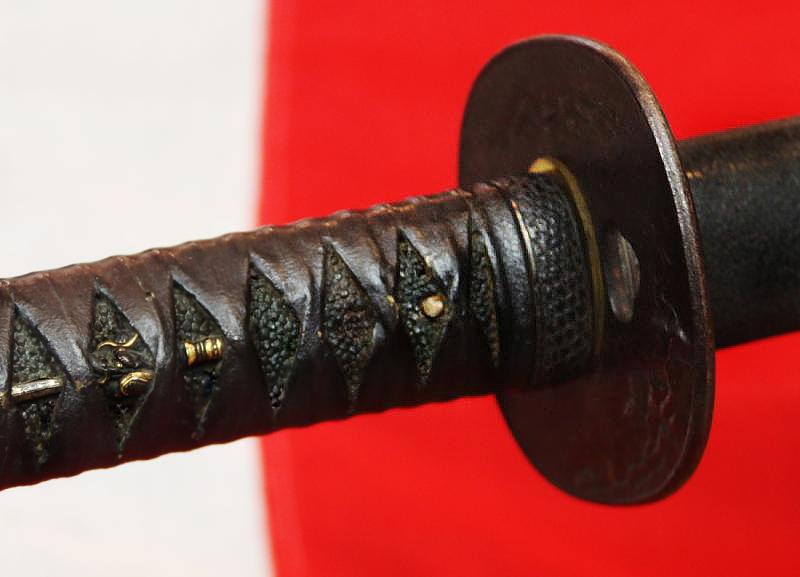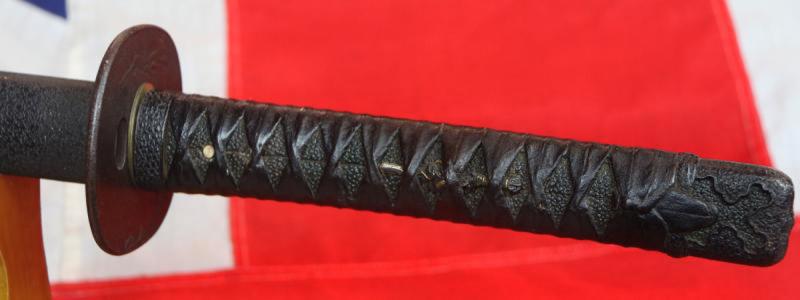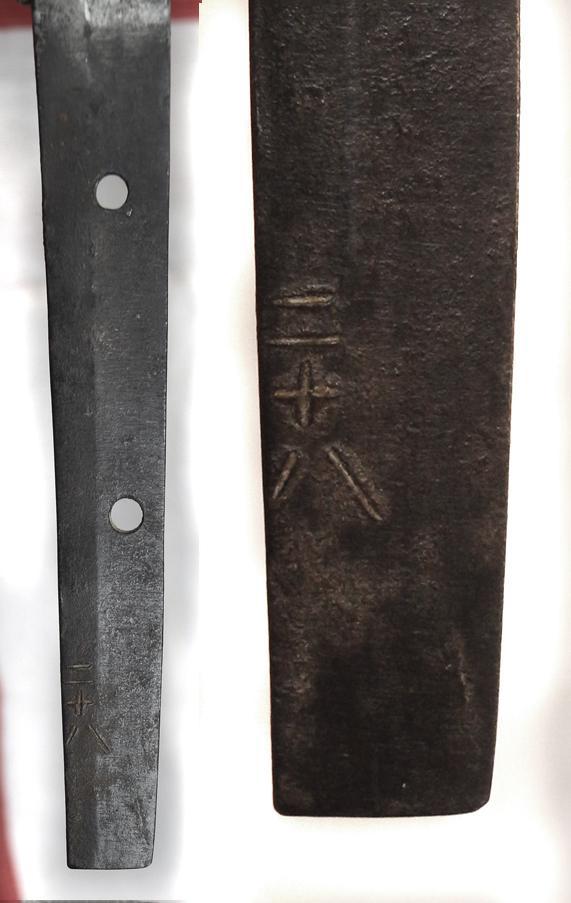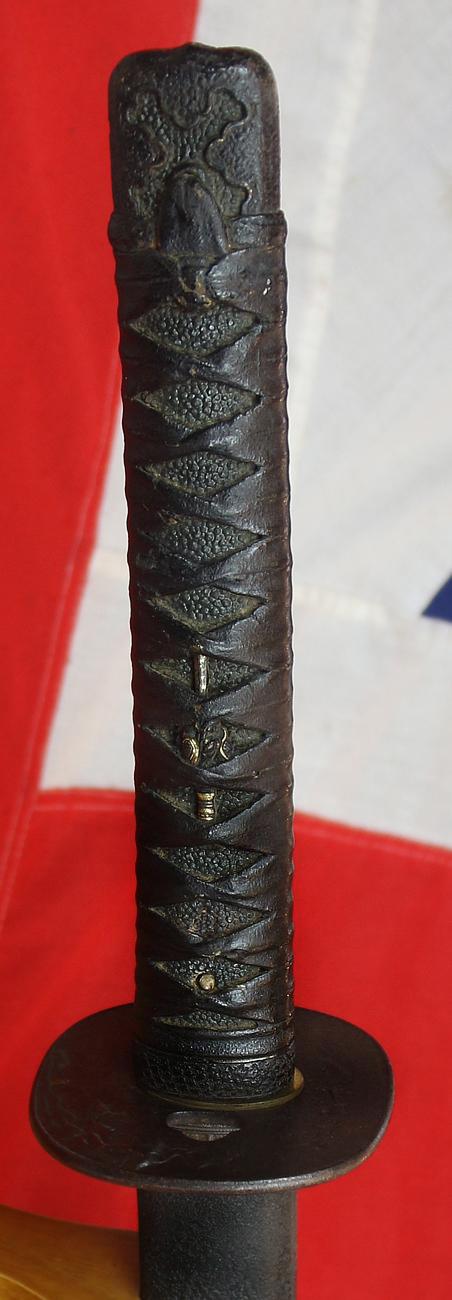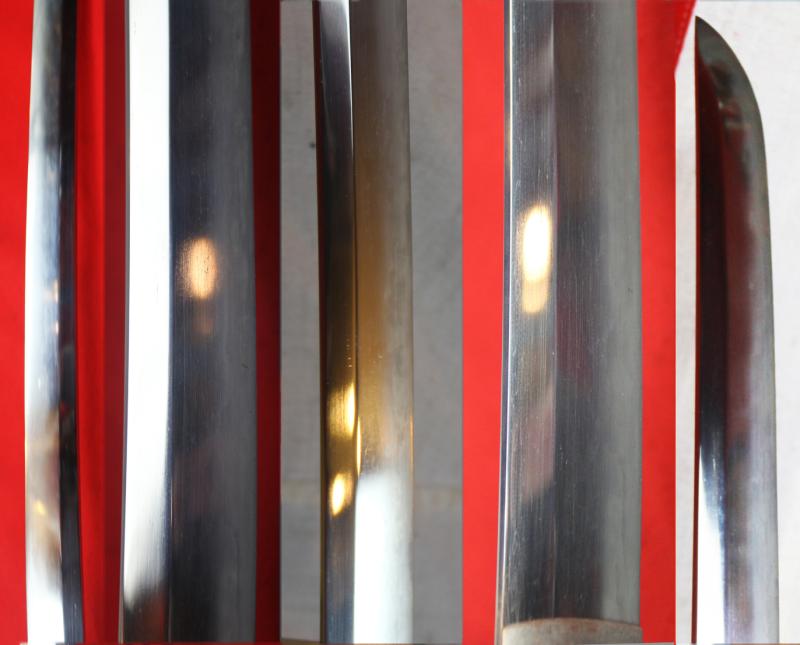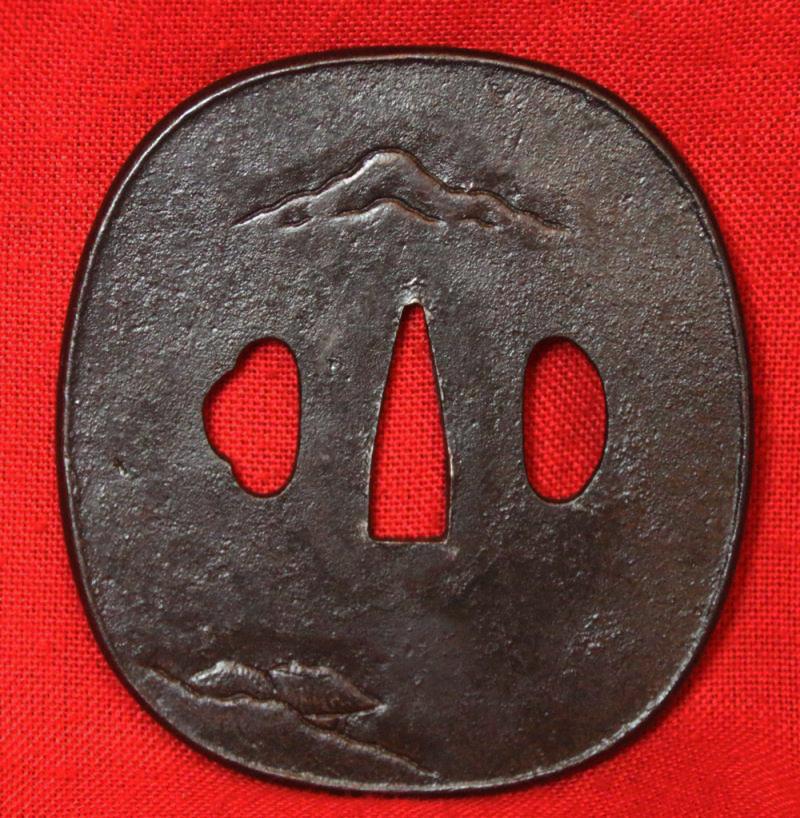An Over 500 Year Old Samurai Ninjutsu Battle-Sword Katana. Fitted in Total Black For Camouflaged Combat. It’s Simplicity is In Fact Most Elegant. The Black on Black Livery is The Apex of Sophistication As Much For Works Art as For Personal Attire.
A super samurai or even ninjutsu sword, all original Edo fittings, excellent highly distinctive original Edo period full black décor, the hallmark of the traditional Samurai or a ninjutsu combat sword, worn with the intention of displaying no decorative plumage, this sword was for a serious no nonsense samurai or ninja who had no need for displays of status that more embellished swords would have, and would be in fact a great disadvantage. It is why the infamous exponent of the martial art of ninjutsu, the ninja, were often traditionally adorned in all black, armed with an all black mounted sword, in order to remain entirely as unseen and unnoticed as possible, hence their mythical ability to become invisible, not the fantasy of actual invisibility, but the reality of being so unnoticeable and near impossible to see at dusk or at night, they were ‘effectively’ invisible.
Black leather binding over fine dragon and ken shakudo menuki, in turn on fine black giant ray skin. Hilt and saya in dark patinated suite of handachi mounts, and the lacquer in an ishime stone ground finish. The sword bears a powerful blade, in beautiful polish showing a most extravagent hamon and hada.
The swordsmith has signed the tang, Ni Jyu Hachi, that are three nen kanji on the bottom of the nakago, this is very unusual indeed.
The origin of the so-called ninjutsu;
Spying in Japan dates as far back as Prince Shotoku (572–622). According to Shoninki, the first open usage of ninjutsu during a military campaign was in the Genpei War, when Minamoto no Kuro Yoshitsune chose warriors to serve as shinobi during a battle. This manuscript goes on to say that during the Kenmu era, Kusunoki Masashige frequently used ninjutsu. According to footnotes in this manuscript, the Genpei War lasted from 1180 to 1185, and the Kenmu Restoration occurred between 1333 and 1336. Ninjutsu was developed by the samurai of the Nanboku-cho period, and further refined by groups of samurai mainly from Koka and the Iga Province of Japan in later periods.
Throughout history, the shinobi were assassins, scouts, and spies who were hired mostly by territorial lords known as daimyo. Despite being able to assassinate in stealth, the primary role was as spies and scouts. Shinobi are mainly noted for their use of stealth and deception. They would use this to avoid direct confrontation if possible, which enabled them to escape large groups of opposition.
Many different schools (ryū) have taught their unique versions of ninjutsu. An example of these is the Togakure-ryū, which claims to have been developed after a defeated samurai warrior called Daisuke Togakure escaped to the region of Iga. He later came in contact with the warrior-monk Kain Doshi, who taught him a new way of viewing life and the means of survival (ninjutsu).
Ninjutsu was developed as a collection of fundamental survivalist techniques in the warring state of feudal Japan. The ninja used their art to ensure their survival in a time of violent political turmoil. Ninjutsu included methods of gathering information and techniques of non-detection, avoidance, and misdirection. Ninjutsu involved training in what is called freerunning today, disguise, escape, concealment, archery, and medicine. Skills relating to espionage and assassination were highly useful to warring factions in feudal Japan. At some point, the skills of espionage became known collectively as ninjutsu, and the people who specialized in these tasks were called shinobi no mono.
There were no female ninja, however, the late 17th century the ninja handbook Bansenshukai describes a technique called kunoichi-no-jutsu (くノ一の術, "the ninjutsu of a woman") in which a woman is used for infiltration and information gathering, which Seiko Fujita considers evidence of female ninja activity.
.
Han-dachi originally appeared during the Muromachi period when there was a transition taking place from Tachi to katana. The sword was being worn more and more edge up when on foot, but edge down on horseback as it had always been.
A samurai was recognised by his carrying the feared daisho, the big sword daito, little sword shoto of the samurai warrior. These were the battle katana, the big sword, and the wakizashi, the little sword. The name katana derives from two old Japanese written characters or symbols: kata, meaning side, and na, or edge. Thus a katana is a single-edged sword that has had few rivals in the annals of war, either in the East or the West. Because the sword was the main battle weapon of Japan's knightly man-at-arms (although spears and bows were also carried), an entire martial art grew up around learning how to use it. This was kenjutsu, the art of sword fighting, or kendo in its modern, non-warlike incarnation. The importance of studying kenjutsu and the other martial arts such as kyujutsu, the art of the bow, was so critical to the samurai, a very real matter of life or death, that Miyamoto Musashi, most renowned of all swordsmen, warned in his classic The Book of Five Rings: The science of martial arts for warriors requires construction of various weapons and understanding the properties of the weapons. A member of a warrior family who does not learn to use weapons and understand the specific advantages of each weapon would seem to be somewhat uncultivated.
Every single item from The Lanes Armoury is accompanied by our unique Certificate of Authenticity. Part of our continued dedication to maintain the standards forged by us over the past 100 years of our family’s trading
Cutting edge 27 inches long, overall in saya
Code: 23407
5950.00 GBP


